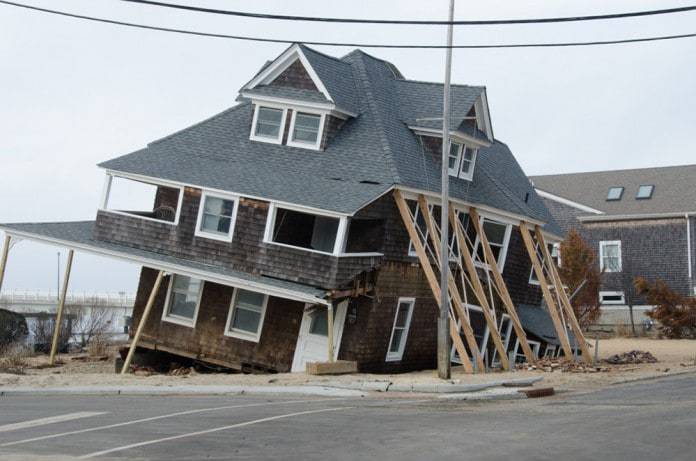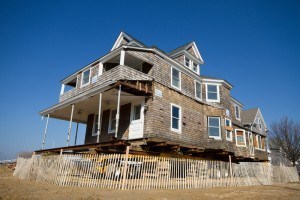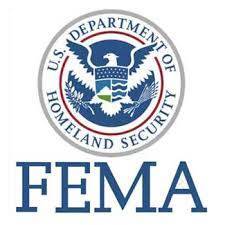
OCEAN COUNTY – Thousands of homes substantially damaged in Superstorm Sandy have been raised to new elevations since October 2012.
Some homes were entirely swept away and into Barnegat Bay, and while others still sit boarded up years later, many homes were elevated or are in the process of being elevated.
Home Elevation Numbers

We took a look at the number of permits issued for home elevations in several Ocean County towns that saw dramatic devastation from Sandy.
These towns have several hundred or more home elevation permits issued since Sandy. For example, in Toms River, 1,148 home elevation permits were issued, officials there said.
Some neighborhoods suffered catastrophic flooding, such as Ortley Beach and Silverton in Toms River; Shore Acres and Baywood in Brick; Good Luck Point and South Seaside Park in Berkeley; and Beach Haven West and Cedar Bonnet Island in Stafford Township. By November 2012 Governor Chris Christie estimated that the cost of Sandy-related damage in the state to be $36.8 billion. Toms River reported more than $2 billion in lost ratables.
Once the Federal Emergency Management Agency established new flood zones for recommended building elevations, and Sandy survivors began to rebuild, rehabilitate or elevate their homes, they were slammed again, this time to a new tax assessment on their improved dwellings.
Brick – 314 Homes Elevated
In Brick, 314 homes have been elevated, six are nearly completed, 31 are waiting for final approvals and 197 are under construction in various stages of work, Brick Mayor John Ducey said.
Also, 379 single family homes were demolished and rebuilt, he said.
Brick lost an estimated $357 million in ratables as a result of Sandy.
“The look of our waterfront neighborhoods are changing drastically. The new flood maps have changed our waterfront areas forever,” Ducey said.
Toms River – 1,148 Elevation Permits
Toms River lost some $2 billion in ratables due to Sandy, and Mayor Thomas F. Kelaher said that by November 2016, the township had approved 2,070 demolition permits and completed 2,001.
In Toms River, 1,875 new home permits were approved and 1,428 were completed. Of the 1,148 elevation permits, 753 had been completed; and of the 3,795 substantially damaged homes, 3,023 of those had been rebuilt.
“Nearly five years after Superstorm Sandy, there is nothing more important than getting families in Toms River back in their homes,” Kelaher said.
Toms River Township Administrator Paul Shives said the demand on the building department has continued as evidenced by these figures.
“These figures represent a tremendous amount of work on the part of our township departments that deal with the reconstruction process. We know there’s much work still ahead but we will continue to work hard every day to get every resident back into their homes,” Kelaher said.
Berkeley – 150 Home Elevation Permits
Berkeley Business Administrator John Camera said Berkeley Township has had 185 re-builds and they have issued 150 permits to elevate existing homes. All but 25 have been completed.
Elected officials “feel deeply for the financial and emotional hardships which their constituency has had to deal with,” he said.
Camera said Berkeley Township has been “second to none” regarding proactive measures to help Sandy-affected property owners, including waiving fees and “doing whatever has been possible” to expedite doing the repairs and rebuilds to get everyone back into their homes.
“As tough a process as this has been for everyone, the ultimate effect has been a beautification and modernization of many properties. Additionally, all of these properties are now safer and much more resilient than ever before,” Camera said.
 Stafford – 626 House Raising Permits
Stafford – 626 House Raising Permits
Mayor John Spodofora of Stafford Township said the initial impact of Superstorm Sandy was the loss of $200 million to the ratables base there, but over the last four years, the township has recovered from the loss, which has had a minimal tax impact on residents.
“Sandy was the worst storm to hit Stafford in recorded history. The response from everyone was incredible, and a testimony to everyone involved, Spodofora said. “Our recovery was in no small part a reflection of the efforts of many volunteers and dedicated employees.”
He said he sees “continuing a great future” as the rebuilding continues and the new homes being constructed add “so much more” to the ratable base.
This year Stafford Township would be opening a new Community Center to replace the one lost by Sandy, Spodofora said.
Township Administrator James A. Moran said that while they have recouped the $200 million in ratables lost to Sandy, Stafford Township is still not back to the tax assessment level that existed prior to the storm.
“The reduction in the current taxable value is the result of a sagging economy, and not from Superstorm Sandy,” he said.
Some of the recovery has been from other sources, such as new businesses, he said.
Stafford has issued 870 demolition permits, of which 832 are completed. There have been 626 house raising permits issued, and 392 of those are done. There were 693 single-family dwelling permits issued and 559 of those are completed, Moran said.
With New Heights Comes Higher Tax Assessment
Mayor Carmen Amato of Berkeley said his administration has been focused on the issue of increased assessments for some time, saying it is unfair that in many cases a home elevation is mandated by insurance, not because the homeowner wanted to elevate. Then, the homeowner faces a higher tax assessment as the elevation increases the value of the home.
“We approved a resolution, met with Senator (Christopher) Connors (R-3rd) and contacted the governor’s office seeking legislation on a five-year tax abatement for these specific Sandy-related homes,” Amato said.
Mayor John G. Ducey of Brick also said he has requested that state legislators look into passing a law that would give an amnesty period to residents who have raised their homes.
“Without a state law there is no mechanism in place for a town to give this amnesty to its residents,” Ducey said.
Toms River tax assessor Richard Kenny said that changes in assessment due to any type of construction are based on the completed construction project.
“The reason for the construction is basically irrelevant to the assessment valuation process,” he said.
“After construction is completed, a field inspector from this office visits the property to collect the assessment data on the new construction. That data is then entered into our computer-aided appraisal file to calculate a new assessment on the building,” Kenny explained.
The tax assessor’s office does not simply increase an assessment a certain number of dollars just because the home has been elevated. All property characteristics are taken into consideration, he said.
Moran, of Stafford, said the assessment from elevated homes could also reflect a lower assessment that occurred after the storm when that home was labeled substantially damaged.
“Tax assessments were lowered, post-storm, to reflect the storm damage and decreased value in land, so there was an adjustment,” Morah said. “There is no question that once the houses are repaired they have a higher value than pre-storm. Also, four years have passed, so the assessments are based on recent sales in the area.”
As an example, if a Cape Cod-style home was assessed at $400,000 before the storm, it could be worth $500,000 after it is elevated. “The assessment would reflect that,” Moran said.
Moran said that recovery has gone much better than anyone could have imagined in 2012, and even though Beach Haven West has still not recovered, Stafford is still better off than some of the surrounding towns.





